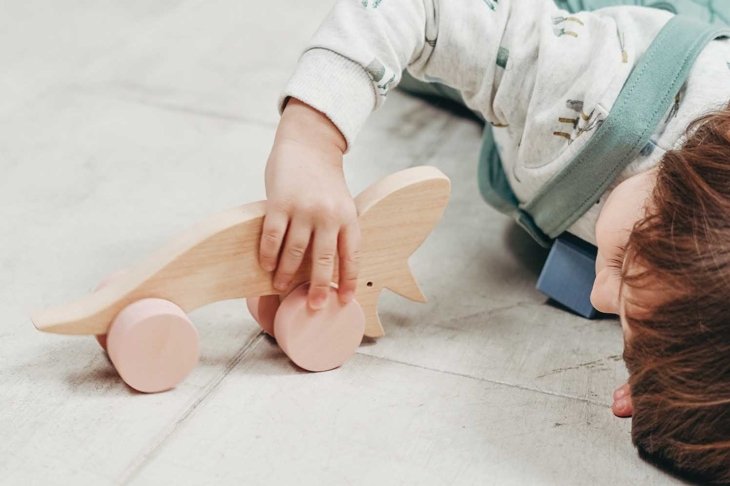
Let’s face it—it’s been a hard time for many parents and their children, navigating a world of hand sanitizer, masks, online schooling, and limited play dates. The spectre of COVID-19 has many parents understandably worried about their children’s health, but threats lurk beyond the virus.
From the air they breathe to the food they eat, children can be exposed to a range of harmful toxins in their environments each day. Thankfully, there are many simple ways you can help to minimize toxin exposure.
Different ages, different stages, different risks
Children are more vulnerable to exposure to environmental toxins than adults for many reasons. Firstly, toxins can be passed onto fetuses and babies during pregnancy and breastfeeding, putting children at increased risk of childhood illness and development disorders.
What’s an environmental toxin?
Environmental toxins are chemicals or other factors present in our environment that may cause adverse health effects in the people exposed to them.
Since children’s bodies are smaller, any toxins they ingest effectively come in a larger dose. Given their proximity to the ground, children are physically closer to toxins lurking in dust and soil.
Kids consume more water and milk, which are potential vectors of toxins, for their size than grown-ups do. And as any parent or caregiver is aware, kids are more likely to engage with their environment using their mouths and hands, giving toxins a direct entry point.
Finally, according to Dr. Laura Nicholas, ND, limits on safe toxin exposure are often based on studies done on adult males, meaning that we don’t have a solid understanding of safe toxin loads for little ones.
What’s the impact?
These factors put children at heightened risk of being exposed to hazards that can alter their cognitive function and development. In children, exposure to toxins has been linked to developmental delays, hormonal disturbances, respiratory and skin issues, obesity, and intellectual disabilities.
Research on the impact of environmental toxins on children is usually done retroactively given ethical considerations, making it hard to draw conclusions. “We won’t be able to get better data,” says Nicholas. “What we need is more data over time on these issues.”
Toxins to watch out for
Common environmental toxins include naturally occurring compounds such as lead, mercury, benzene, and formaldehyde, as well as synthetic substances such as bisphenol A (BPA) and bisphenol S (BPS), parabens, pesticides, phthalates, polychlorinated biphenyls (PCBs), and toluene.
Many of these toxins can be found in household sources: food residue, food packaging, household dust, foam-filled furniture, carpeting, personal hygiene products, and tap water. Kids may encounter toxins at home, school, daycare, and even outside when playing in sand or dirt.
Need more information?
Check out Environmental Defence’s printable pocket guide to common environmental toxins, as well as its Dirty Dozen list of 12 commonly pesticide-laden foods.
Keeping kids safe
It may feel overwhelming, but there are straightforward steps you can take to cut down on children’s toxin exposure. Nicholas recommends starting with the air they breathe.
What they breathe
Consider getting a high efficiency particulate air (HEPA) filter for your home, flick on the vent fan when cooking, and avoid exposing children to second-hand smoke. Get children out in nature as much as possible, and bring nature to you with air-purifying house plants.
What they consume
Then, take a look at things that go in your child’s body, including food, water, and medications. Choose organic foods as much as possible, and wash produce well. If you’re worried about the quality of your tap water, consider investing in a filter.
Keep an eye on young children at the park and gently discourage any erroneous snacking on sand or dirt. Talk to a pediatrician about the possibility of cutting down on nonessential medications that may put strain on a child’s liver and slow down their natural detoxification processes.
What you clean with
Finally, think about what goes on your child’s body: lotions, shampoos, soaps, cookware, and household cleaning products. Where possible, shift to natural, nontoxic, and fragrance-free options. Choose glass, stainless steel, or ceramic containers and tableware instead of plastic containers. Dust and vacuum your home frequently.
During the COVID-19 pandemic, it may not be possible to completely avoid antibacterial soaps and sanitizers, but children should be encouraged to wash their hands with natural soap and water as much as they can.
DIY safe cleaning
Many household products, such as cleaning products, can be easily made at home using natural ingredients. Invite your kids into the kitchen for a fun day of learning and mixing.
Looking forward
Medical innovation may improve our ability to better understand the impact of environmental toxins on children and avoid exposure. Earlier this year, scientists announced the development of a blood test to easily screen pregnant women for harmful prenatal toxins linked to childhood illness and developmental disorders.
To be as proactive as possible about children’s health, Nicholas recommends testing for and treating environmental toxin exposure before starting to try to conceive. For example, a nutrient deficiency test can highlight which free radical-fighting antioxidants your body needs. Talk to a naturopathic doctor about your testing options.
In the meantime, consider supporting environmentally and health-conscious companies, and get behind political representatives focused on issues such as clean air and water. Finally, talk to kids about environmental toxins in an age-appropriate way. Knowledge is power, and though they might not yet wield political clout, children and adolescents have proved to be a mighty force in demanding a more sustainable future.
Toxic toys
New research has found that plastic toys can contain more than 100 harmful chemicals. Labelling schemes and regulations often differ from country to country, making it difficult for parents and caregivers to know what toxins a toy may contain, and at what levels.
If you’re giving a toy to a child in your life, look for one made of natural materials such as wood or organic cotton, which are better for people and the planet.


